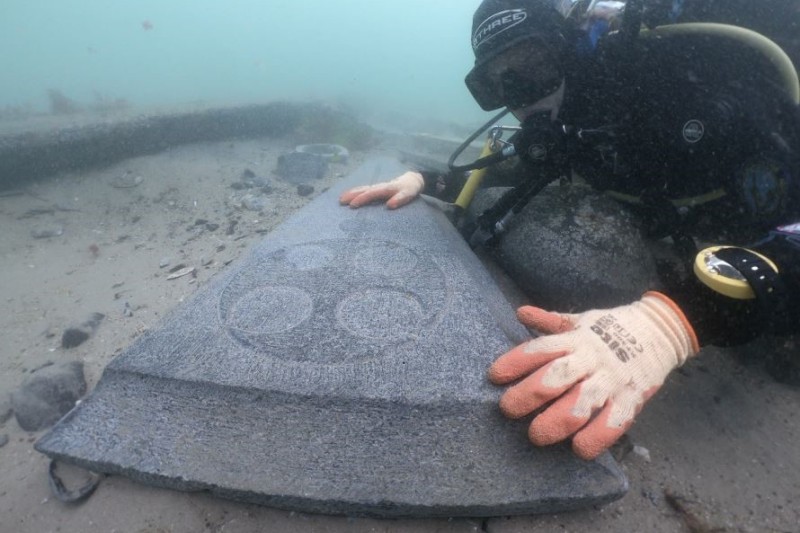Maritime archaeologists at Bournemouth University are working to recover and preserve the wreck of England’s only known Medieval commercial vessel, which sank off Studland Bay during the reign of Henry III.
The 13th century wreck is officially listed as The Mortar Wreck, because it's carrying a collection of grinding Purbeck Marble mortars, together with intricately carved grave slabs; examples of which can be found in some of the UK's most impressive churches and cathedrals, including Westminster Abbey.
The waters off the south coast of England are notorious for shipwrecks due to the currents and moving sandbanks. There are many historic wrecks in the area, and the Mortar Wreck was discovered as a ‘bump’ in 1982, with all the timbers and the artefacts remaining covered by sand.
The complete cultural and archaeological significance was not realised until 2019 when BU conducted an initial site survey following a tip-off from the skipper of a local charter boat.
BU’s team of maritime archaeologists are now working to conserve a pair of recently excavated Purbeck Marble grave slabs and other artefacts, with a plan to display these in Poole Museum as part of their redeveloped Shipwreck Gallery. In the meantime, the site has been afforded the highest level of government protection, as England’s oldest known wreck site with a visible surviving hull.
Thanks to generous support from donors, Professor Dave Parham and his team have been able to complete three dive seasons. These have allowed them to complete a full assessment and mapping of the site, recovering artefacts at immediate risk of degradation for conservation, and conserving any artefacts under significant threat from exposure to the changing conditions on the seabed, and wood boring marine wildlife such as shipworms. Dendrochronology has also enabled the team to date the wreck and trace its timbers back to the same forest in Ireland that supplied the timbers for Salisbury Cathedral.
The recovered mortars and grave slabs will allow us to learn more about the ancient craft of stonemasonry in the 13th century and more about life on board the ship when it sank.
For further information on The 1250 Wreck, please contact Philippa Wadsworth, Trusts and Stewardship Officer, via email: [email protected]
 A diver examining a Purbeck marble grave slab
A diver examining a Purbeck marble grave slab